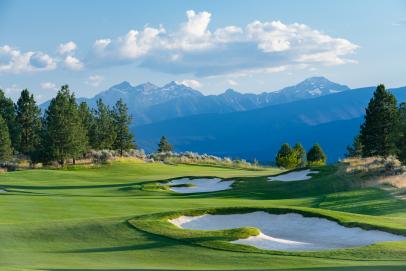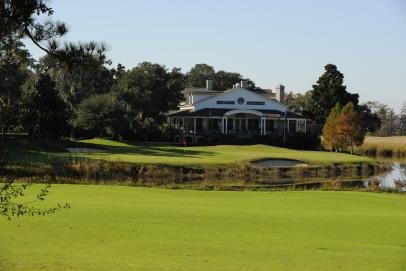Difficult test
The 10 toughest courses I played in college
Ask anyone who played golf in college: One of the greatest perks is how many exceptional courses you play in tournaments, qualifying and during spring-break trips—all for free. With college events played at Cypress Point, Pebble Beach and St. Andrews, among many other top courses, there’s no better time to be a college golfer.
I started my college golf career at Brown before I transferred to play at Duke for my last two and a half years. Over the course of my four years, I was fortunate enough to compete on some of the country’s best courses.
A common misconception is that college tournaments are set up far easier than tour courses. Shorter tees, easier pins and less rough. Not so much. In talking with friends who have gone on to play professionally, they often tell me that many courses they played in college were tougher tests than the ones they now compete on. Look at the performance of top players out of college, and it’s clear they’re prepared for the tour.
To that end, I created this guide of the 10 toughest courses I played in college. We either played tournaments or held qualifying at these difficult courses while I was at Brown and Duke. If there was anything I learned from playing these tough layouts, it’s that if you’re looking to have success in college or beyond, you better be a fantastic driver of the ball. These courses will punish you if you’re not.
Be sure to click through to each individual course page for bonus photography and reviews from our course panelists. We also encourage you to leave your own reviews on the courses you’ve played … so you can weigh in on what makes these courses so difficult (or tell me why they’re not!).
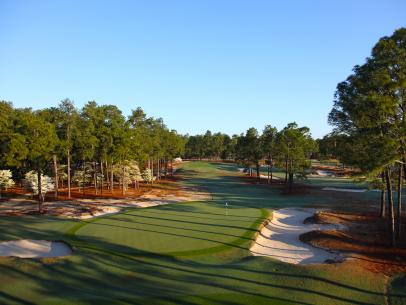
Why it’s tough: Wake Forest hosted their spring event at Pinehurst No. 2 in early March, with drizzly conditions and temperatures in the 40s and 50s. Luckily for me and the field, we did not play the tips, but the challenge of No. 2's greens kept players from going low. I was surprised at how forgiving the course is off the tee, and even if you miss the fairway, often you’ll get a decent lie in the native area. (Other times, however, you're hacking out sideways or taking an unplayable lie.)
However, the “effective green” size is tiny, meaning you need to be precise and strategic with your second shots. In the practice round, our coach had us outline the “effective green” in our yardage books—the place where a ball would stop. Instead of playing to the middle of the greens, as you might normally do on such a tough course, we played to the middle of the effective greens, which were far smaller. Even with solid iron play, you’ll have several shots off tight, grainy lies around the greens to pins that are perched on small plateaus. I opted for putter nearly every time, ala Martin Kaymer in 2014.
Aside from these nervy shots, the toughest part of No. 2 is the strategy required on every shot. There's never a shot where you can lose your focus and pick a lazy target. Every approach must be thoroughly planned out. That's why it has held up as one of the best strategic designs in the world since its opening.
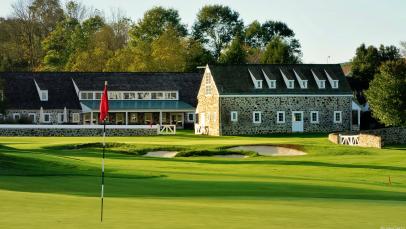
Why it’s tough: One of the toughest aspects of college golf, especially in the Northeast, is that you’re playing in the fall and spring when temperatures and conditions can make scoring difficult. The wind was blowing hard when I played the Ivy League Championship with Brown at the Old Course at Stonewall, just west of Philadelphia.
Wind aside, the Tom Doak is design is one of the toughest ball-striking tests I’ve ever played. On the front nine, water and native areas hug the right side of fairways—not ideal for my block miss. Many of the greens are very small, and some are angled in tricky directions, like at the par-4 fourth, where the shallow green resembles the 12th at Augusta.
There’s nothing unfair about the course, only the targets are demanding and the penalties for small misses are stiff at times. At times, the course felt Pete Dye-esque for its unrelenting ball-striking demands and intimidation. Scores were high that week at Ivies, and when the two courses at Stonewall hosted the 2016 U.S. Mid-Am, only four players broke par over 36 holes of stroke play.

Why it’s tough: The first tee shot at the Jack Nicklaus design in Jupiter is relatively benign. It's a wide landing area and a modest 420-yard opener. What’s the big deal, I thought, as I opened a qualifying round during a spring break trip while at Duke.
The driving corridors increase in difficulty as the round gets going—it's Harbour Town-esque in spots, with overhanging limbs demanding a precise start line, and 25-yard-wide slivers of fairway requiring an equally precise finish line. Except unlike Harbour Town’s modest 7,000-yard length, Trump Jupiter tips out around 7,500 yards, so you’re forced to hit driver on nearly every hole.
Many greens are small and angled, with tightly mown falloff areas gathering any mediocre approaches. The slope and rating are around 76/150, and the course felt all of that. Luckily we were playing match play.
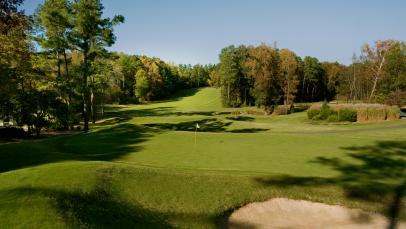
Why it’s tough: We were very fortunate to have a challenging Robert Trent Jones Sr. and Rees Jones design right on campus. The course best suits a player who works the ball from right-to-left off the tee and left-to-right into the greens.
Driving the ball well is imperative at Duke, as the course is fairly long, the greens are firm and the rough is thick, especially in the fall when we host our tournament, the Rod Myers Invitational. If you miss the green on the wrong side, you’ll often be left with a long bunker shot with a 10-foot high lip.
The front nine is significantly easier than the back, as Nos. 10-13 are as tough as any four-hole stretch in college golf. The par-3 12th plays around 190 yards to a narrow, angled green that is nearly an island. You're crazy to aim anywhere on the right half of the green. The greens are often quite firm and fast, requiring you to stay below the hole to have makeable putts.

Why it’s tough: The Bear's Club sits on the same parcel of land as Trump National Jupiter, and both were designed by Jack Nicklaus, so it’s little surprise that they share a similar intimidation factor off the tees.
Unlike the stress-free start at Trump Jupiter, I was feeling it early during our qualifying round as the first tee plays off the putting green and only requires a 3-wood. Don’t get steep. It doesn't help that you'll likely have at least one PGA Tour player watching.
The bunkers at The Bear's Club were inspired by those at Royal Melbourne in Australia, and the towering lips often give the illusion that there is less space beyond them than there is. The Bear's Club is significantly shorter than its neighbor, and if you can withstand the intimidation of water and trees closely lining each fairway, there is actually a fair amount of room to land the ball. The second shot at the par-5 18th is one of my favorite in golf, with the sprawling Mediterranean clubhouse in the background.

Why it’s tough: Unlike at some of the other top-tier private clubs in the Jupiter area, you won’t make as many big numbers at Jupiter Hills, but that doesn’t mean it’s not an unrelenting test.
There is not as much water or as many thick stands of trees that could lead to an easy double on the Hills course. Still, the fairways are very narrow, firm and dogleg at the point where most drives will land, making them very tough to hit. Sandy waste areas line most of them, and deep bunkers with Augusta National-like faces equally intimidate and penalize. It’s essential to play from the fairways, as the greens are firm and fast, and many approaches play uphill, requiring high shots with spin to stay near the hole.
The terrain on the Hills course is unlike many Florida courses, with up to 60 feet of elevation change, including a steep drop from tee to fairway on the first.

Why it’s tough: Off the tee, Pinehurst No. 4 is a kinder version of the more famed No. 2. After the Gil Hanse and Jim Wagner renovation in 2018, the native sandy waste areas that we associate with Pinehurst line the fairways, but the width is far more generous than at the sibling U.S. Open course.
We would regularly qualify at No. 4 in the winter when it was really wet in Durham, as the courses in the Sandhills are much better at draining. Perhaps I’m a little biased because we would often play the course in cold and blustery conditions, but I found it difficult to go low at No. 4, particularly because of the par 3s. The fourth is relatively tame, but the sixth, 11th, 14th all require precise long-iron shots to avoid a dropped shot.
For me, the 11th is a standout hole on the course, as any shot that lands in the back half of the angled green will likely bound over into a tight chipping area. It’s not too long, but a quality iron shot is needed to have a good look at a 2.
The greens are much larger than on No. 2, but in many spots the slopes are equally dramatic, or more so, like at the par-5 second. It's an otherwise straightforward hole, but the green has several massive slopes that allow for some tucked pins and dicey short shots. In many ways, that’s No. 4: Not aggressively difficult, but if you get out of position, it’s easy to drop shots fast.
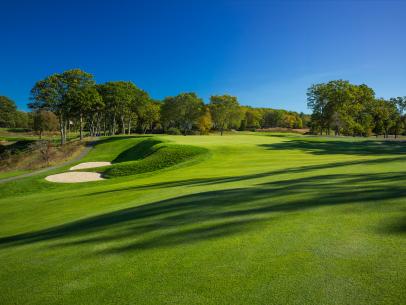
8. Yale Golf Course
New Haven, CT
Why it’s tough: Perhaps more than any other course I played in college, knowing where not to hit it at Yale is just as important as knowing your ideal target.
You’ll rarely find slopes as dramatic as those at Yale, and should you get on the wrong side, you’ll make a quick bogey. Take the relatively short par-4 second hole: The green is long and wide, but if you tug your approach into the cavernous bunker on the left, you’ll do well just to get out. And of course, there’s the massive Biarritz green on the par-3 ninth. Finding the proper shelf is the difference between a makeable birdie look and a likely three-putt.
Given there are so many blind shots into the greens, it’s a course you need to play several times before you feel comfortable with your targets. One word of advice: Play your second shot at the par-5 18th farther to the right than you think—OB tightly hugs the left side, and you have tons of room to bail out. The toughest part about playing college events at Yale, though, was the physicality of walking 36 holes around the tumbling terrain. I’m glad those days are over.
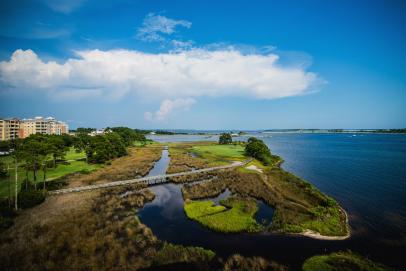
Why it’s tough: You better take advantage of the several scoreable par 5s at the Nicklaus course at Bay Point, as the rest of the holes are stiff ball-striking tests. Narrow, angled greens demand precise approaches or else your ball will feed off into grainy collection areas.
The par-4 fifth is one of the toughest holes I played in college. The tee shot plays to a peninsula fairway guarded by marsh on all sides. You’re forced to lay it back over 150 yards for your approach, which again plays over marsh to a sliver of a green that’s angled away from you. What’s more, the hole is on the water, meaning there’s usually a stiff breeze in and off the right.
If you score well at Bay Point, you’ve had a fantastic day with your irons.
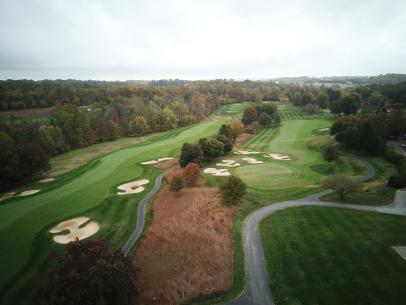
Why it’s tough: Have you ever played a course that, for some reason, just doesn’t fit your eye and feels much tougher to you than to everyone else? Well, for me, that was Four Streams in Maryland, about an hour outside Washington, D.C.
While I was at Brown, Georgetown hosted their event there, and I was surprised that scoring was fairly low, as I thought it was a pretty solid test. Driving the ball well is essential at Four Streams, as there are several long par 4s that play over 450 yards, and if you’re out of position off the tee, you’ll have little chance of making par.
The back nine plays through the woods and tightens significantly with some very undulating greens. If you’re hitting it well, Four Streams is scoreable but will quickly punish you if you’re not sharp.
• • •
Explore Golf Digest's recently relaunched Places to Play community, where you can add star ratings and reviews for all the courses you play. We've collected tens of thousands of reviews from our course-ranking panelists to deliver a premium experience, which includes experts' opinions, bonus course photography and videos, plus much more. Check it out here!



